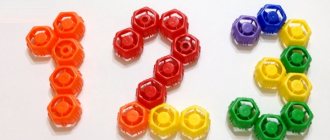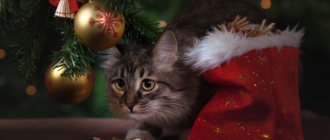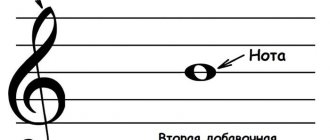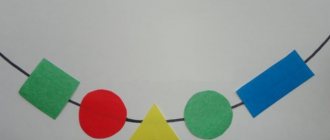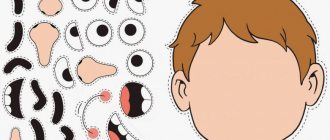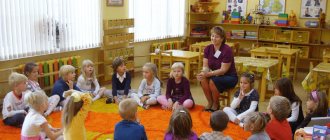Speech therapy rhythms in theory and practice are the focus of each of the publications in this thematic section. Here you can find useful tips and advice for teachers; ready-made notes for logorhythmic classes, theatrical performances, gymnastics and games.
You may find that special methodological developments on the use of logorhythmic exercises in integration with classes of a completely different focus will be useful in your work. Check out the positive experiences of your colleagues in children’s speech development and feel free to take note of them.
Goals and objectives of logorhythmics
Classes can be individual or group. In speech therapy, speech and motor forms of development are considered interrelated. Movements performed in a certain rhythm are easy to remember. It is easy to build speech rhythm on their basis. By moving and at the same time pronouncing phrases at the same pace, the child learns to speak clearly and beautifully.
The goal of logorhythmics is the prevention and correction of speech defects, physical and psycho-emotional development.
Tasks:
- correction of speech disorders;
- improved breathing;
- improvement of articulation, phonemic hearing;
- improved coordination of movements;
- expansion of individual vocabulary;
- developing interest in music as a cultural phenomenon;
- development of memory, concentration, ability to navigate in space;
- improving the sense of rhythm;
- expanding ideas about the world around us;
- stimulation of speech activity.
Which activity to choose depends on the problem the child has. If it is stuttering, rhythm and breathing exercises should be predominant. And if a preschooler finds it difficult to reproduce certain sounds, then articulation classes become mandatory.
Types of tasks in logorhythmics
Logorhythmics exercises include various movements, words, songs, and sounds. Combining this results in useful, interesting tasks. Classic types of speech therapy rhythm classes consist of walking, marching, breathing, and dancing exercises.
Walking is a mandatory exercise in every lesson. Rhythmic movements with the pronunciation of words help cope with speech development anomalies in preschoolers. The teacher needs to regularly complicate it: children must learn to march in a circle, in pairs, in threes, and learn a counter step. Walking teaches kids to navigate in space and develops correct posture. Performed to musical accompaniment.
Exercises to strengthen muscle tone help preschoolers cope with their movements and teach them to control muscle tone.
Logorhythmic exercises for the breathing apparatus also strengthen the cardiovascular system. Completing these tasks helps strengthen diaphragmatic breathing and trains the duration of inhalation and exhalation.
Voice development tasks involve pronouncing vowels and consonants while exhaling. Thus, children develop the strength and expressiveness of their voice.
Dance elements in the tasks allow you to develop motor skills and feel the beats. The movements are selected from classical and folk dance, where the baby’s arms and legs can be used.
A variety of speech tasks can be accompanied by music, then the baby must learn to pronounce lines in accordance with the musical beat. This trains memory well and develops expressiveness of speech.
Puzzles
Riddles are motivating when working with little ones, as they allow them to be as interested as possible and motivated to complete the task. It is better to choose riddles with a saying. So, based on the content and rhyme, the baby immediately understands what is being said.
Poems
Using poems, you can create a task with the addition of dance elements. During the performance, children pronounce what they show with their movements. After this, you can talk with the children about the content of the poem. This also includes logarithmic songs.
Short stories
By playing out small stories (fairy tales), children get ready to perform logorhythmic exercises.
Group of visual techniques
The teacher should prepare in advance for conducting classes, select pictures, videos with exercises, as well as toys, on behalf of which the procedure for completing tasks will be explained.
Practical techniques
Similar techniques are used to summarize the results of speech therapy classes. Such techniques include drawings, crafts, and projects. Projects can be completed at home, together with parents of preschoolers.
Gaming techniques
Almost all tasks in logorhythmics are based on the game. Where complex interaction is not provided, you can use games for the little ones that will help them get ready for work.
How to personalize tasks
In order for a preschooler to accurately remember material based on speech therapy rhythms, he must hear, see, and move during classes. By combining several techniques you can get attention from the most restless children.
What is included in logorhythmics
Logorhythmics classes in preschool include:
- different types of physical activity - walking, squats, jumping, dancing, clapping, waving your hands - such exercises are usually used as a warm-up;
- speech correction methods;
- articulation gymnastics, breathing exercises;
- singing, reading poetry, saying tongue twisters;
- finger gymnastics;
- games to develop concentration, auditory and visual perception, memory;
- exercises to improve facial expressions, strengthen the facial and jaw muscles;
- relaxation exercises that usually end classes.
Rules for conducting classes in logorhythmics
Logorhythmics implies a playful form that is attractive to children. To increase your preschooler's interest in activities, use toys, illustrations, literary works, musical instruments, audio recordings, unusual objects, puppets and finger puppets.
If a child stutters, he should study every other day. With a healthy preschooler, it is enough to work twice a week.
The pace of exercises during each next lesson should gradually increase as the child successfully completes them. The musical accompaniment must correspond to the tempo of motor activity and the emotional content of the actions.
Don't show your child that you are unhappy with him. Disappointed in himself, he may refuse to do the exercises next time.
Logorhythmics for children 3 years old
3 years of age is a period of active speech development. Therefore, logorhythmics exercises for children should stimulate speech activity, improve thinking abilities, and develop articulation. We also shouldn’t forget about physical activity; outdoor games are required.
Far or near
Explain to children that far away objects make quiet sounds, while close objects make loud sounds. Offer to play animal voices. For example, a dog barks far away - the children say quietly “woof-woof”, a dog barks close - the children say loudly “woof-woof”. Likewise for cats, sheep, cows, roosters, cuckoos, frogs and other animals.
My family
Read the poem, and the students should bend their finger after each line:
- “this finger is grandpa” - kids bend their thumb;
- “this finger is grandma” - index;
- “this finger is daddy” - middle;
- “this finger is mommy” - ring finger;
- “and this finger is me” - little finger;
- “Here is my family” - the children put forward the resulting fist.
Happy tummy
The logorhythmics game is designed to improve breathing through the diaphragm. The preschooler lies on his back, relaxes, and places his favorite toy on his stomach. Ask your child to take a deep breath so that the belly rises and the toy rises with it. Then exhale so that the stomach with the toy drops. Let him repeat the action several times.
Tell me in order
Logorhythmic games develop speech breathing. The child must inhale, then, as he exhales, count the objects in the picture: one, two, three... The number of words spoken while exhaling should correspond to the age of the child.
Articulation gymnastics
Articulation exercises within the framework of logorhythmics tone the muscles of the tongue and jaws. Here are some examples:
- “I’m licking” - the mouth is not wide open, the tongue moves smoothly in a circle over the lips;
- “The teeth are hiding” - the lips are either tightly compressed, or stretched into a wide smile;
- “Football player” - the tongue moves inside the oral cavity from right to left with pressure on the mucous walls;
- “Angry tongue” - the tip of the tongue rests on the back walls of the upper pair of incisors.
Walking
To the accompaniment of music, children walk in a chain, holding the cord with their left hand. First they take the usual steps, the music conveys the appropriate rhythm. Then the pace changes, the players walk about 3 m with an extended step, raising their legs high. At the 3rd stage, children, continuing to move one after another, must step over 5 cubes and steps of a ladder placed on the floor.
What is logorhythmics?
Speech therapy rhythm is one of the links in correctional pedagogy. It links together the word (sound), music and movement.
Logorhythmic classes are aimed at the comprehensive development of the child, improving his speech, mastering motor skills, the ability to navigate the world around him, understanding the meaning of the proposed tasks, the ability to overcome difficulties, and express himself creatively. Daily performance of logorhythmic exercises of various nature at a certain time (morning respiratory-vocal exercises with movement, relaxation exercises, singing vowel sounds with movement, etc.) accustoms children to a health-improving regimen. Under the influence of regular logorhythmic exercises, a restructuring of various systems occurs in the body, for example, cardiovascular, respiratory, speech-motor, cognitive, etc.
Speech therapy rhythmics includes:
- walking in different directions;
- exercises to develop breathing, voice and articulation;
- exercises that regulate muscle tone and activate attention;
- speech exercises without musical accompaniment;
- exercises that develop a sense of musical tempo;
- rhythmic exercises;
- singing;
- exercises to develop fine motor skills.
The basic principle of constructing all of the above types of work is a close connection with music. Music, with its enormous emotional influence, allows you to endlessly diversify movement techniques and the nature of exercises.
- Breathing exercises help develop proper breathing, increase the duration of inhalation and its strength. They can be combined with arm movements, torso rotation, and squatting. They include speech material pronounced while exhaling.
There are many games for developing breathing. We offer you those that your child will definitely like.
- Blow on cotton wool, fluff, small pieces of paper. The child's lips should be rounded and slightly extended forward.
- Fill a basin with water and teach your child to blow on light objects in the basin, for example, boats. You can have a competition to see whose boat has sailed farthest.
- Kids love blowing soap bubbles.
- Don't neglect playing musical instruments! Pipes and harmonica are suitable. You can create a musical orchestra where each family member will have their own instrument.
- Raise your hands up - inhale, lower your hands - exhale. You can gradually make the tasks more difficult. As you exhale, sing vowel sounds (a, o, u, and), then sing them in combination with consonant sounds. Then, as you exhale, you can sing the words: cat, house, whale, etc. You can also sing interjections: “Ah! ABOUT! Oh! Oh! Wow! etc.
- Take a long rope in your hands and hide it in your fist. Invite your child to take the end of the rope and begin to pull the rope, continuously singing the vowel sound (a, o, u, and...), while pulling the rope. The rope can be long or short.
- Voice strength is developed by pronouncing vowel sounds in a louder or quieter voice: “We sing loudly, like an elephant. We sing quietly, like a mouse.”
- Exercises that activate attention cultivate quick and accurate responses to visual and auditory stimuli, and develop all types of memory: auditory, visual, motor.
- To the sound of a tambourine, rattle and other various musical instruments, you can give instructions to the child: “For a loud sound, we stomp our feet, for a quiet sound, we stand still.” Based on this example, you can give all kinds of tasks with movement and changes in tempo, the strength of the sound of musical instruments.
- Speech material must be introduced into logorhythmic classes. The introduction of a word allows you to create a whole series of exercises built not on a musical rhythm, but on a poetic one, which contributes to the rhythm of movements. Pronunciation of poetic lines must be combined with movement. For example, walk around the room with a stomping step and pronounce the words:
Here is our train, the wheels are knocking, and the guys are sitting on our train.
Stretch your arms to the sides, clench your hands into fists, unclench them and place them on your belt, while saying:
Hands to the sides, in a fist. Unclench - and on the side.
- Exercises without musical accompaniment can be used during morning exercises.
- It is easier to master the tempo of music with simple movements: clapping, hitting a tambourine, waving your arms, etc. You can take a drum and invite your child to make short, slow, clear beats that you can slowly walk to. Take your child by the hand and, continuing to slowly hit the drum, walk around the room with him. Once the slow step has been mastered, teach your child that the drum can make short, quick beats. You can run under them like a bunny.
At home, while listening to various songs and melodies, you and your child can clap to the music, stamp your feet, tap the rhythm on the table, etc.
A kind of “training” is speech games - imitation of animal voices. Repeated repetition of simple sounds is very useful for the development of a child’s speech. Adults teach the child by the example of their speech, actively encouraging him to imitate.
Don't despair if you don't succeed the first time. Repeating and being patient will help you.
Lyudmila Loboda, speech therapist Article provided by the Downside Up website
Logorhythmics for children 4 years old
For a 4-year-old child, physical development and improvement of motor skills are of paramount importance. It is also important to teach preschoolers proper communication, beautiful pronunciation, and clear pronunciation of sounds.
Do like the animals
Encourage students to imitate the movements and sounds of different animals. For example, how a bear walks and growls - children answer “rrrr”, while moving in a waddle with clubfoot steps. Or, as a goose flies and screams, the players respond “ha-ha-ha”, while waving their arms widely.
I go, I swim, I fly
When children hear the word “earth,” they stomp on the floor. When they hear the word “water,” they make movements with their hands as if they are swimming. And when they hear the word “air,” they flap their arms like birds in flight.
Vegetables
Show your student illustrations of vegetables, while pronouncing their names clearly in syllables: po-mi-dor, ka-ba-chok, re-dis, ku-ku-ru-za. The child should clap his hands after each syllable he hears.
Feed the birds
To play using logorhythmics, you need to prepare grain, peas and small pebbles, as well as 6 containers. Invite the student to feed the birds that fly to the feeder. To do this, he must transfer the grain, peas and pebbles to another container. First the baby does this with one hand, then with the other, then with both. Then he uses only his fingers: the thumb with the index finger, then with the middle finger, with the ring finger and, finally, with the little finger.
Train
Preschoolers imitate train carriages: they stand one after another, bend their arms at the elbow joint, press them to their sides, and clench their palms into fists. They begin to move to the music in the appropriate rhythm, stomping their feet and at the same time making circular movements with their hands. The tempo of the music changes, following which the children change the speed of their movements.
Automobile
Children answer questions, accompanying their answers with appropriate actions:
- how the car honks - “beep, beep” - the children press their fist on the open palm of their other hand;
- how the engine makes noise - “zh-zh-zh” - they make circular movements with their hands, as if they are steering a steering wheel;
- how fast we drive - “rrrr” - loudly and quickly knocking our feet on the floor;
- how the tires rustle on the asphalt - “sh-sh-sh” - the children rub their palms against one another;
- how the wheels spin - “ta-ta-ta” - make circular movements with your arms in one direction.
Logorhythmics lesson in the middle group of preschool educational institutions
“The cockerel is sick” Logorhythmics lesson for the middle group Tools: Toy - Cockerel, goose, horse, chicken, sticks, hat - Dog, housewife’s handkerchief. Progress of the lesson: We’ll go, let’s go, let’s go, We’ll get into a fairy tale with you. Greet guests. The guests came to us with rhythm, they also want to get into a fairy tale.
The legs walked into a fairy tale along the path... 1. Listening to the voice of the rooster. Who shouted that? He raised the sun. 2. Finger game “Sunshine, sunshine” Sunshine, sunshine, palms together, fingers open, movements on the wrists Look out the window... “window with fingers”
Everyone woke up, Stretched 3. Game poem “Stretchers” Stretches, stretched, arms to the sides Stretches, stretched, arms up And in the hands there are grasping movements, grasping movements And in the legs there are trampling movements. tops And in the mouth - talk, work with the tongue “lick” And in the head - mind. pat themselves on the head
Everyone woke up, stretched... The cockerel began to walk, raising his legs. 4. Musical sketch “Ku-ka-re-ku!” (walking with a high lift of the hip, at the end of the phrase balance on one leg, slaps on the sides “Ku-ka-re-ku!”) 5. Finger play and round dance “The sun has a friend” The sun has a friend - hands up Loud cockerel . comb from the fingers on the head It’s good when, my friend, clap the Voiced Cockerel. scallop and b. p. It’s good when friends join hands and dance in a circle. It’s us, you and me! It’s good when friends stop and shake their clasped hands. It’s us, you and me!
Every morning the cockerel sang his song. But one day the cockerel caught a cold. The rooster fell ill with a sore throat. He won’t sing for the second night. How can we help Petenka? If the cockerel is sick, who will crow in the morning? Maybe a goose? 6. Game of hands “Geese” Ha-ha-ha, ha-ha-ha, We are going for a walk in the meadows!
“Goose” The goose is noisy, walking in a full squat with a long nose. The neck is like a question mark. stretch the neck 6. Imitation of the “Squatting” movement
The goose goes for a walk in the meadows and cackles: Ha-ha-ga.
They went for a walk in the forest. And the hostess began to look for them. 8. Outdoor game “Geese” children sit “hidden” - covering their eyes with their palms Ved. - the hostess in a headscarf - Geese, geese - Ha, ha, ha. Do you want to eat? - Yes Yes Yes. So fly to me! There is food waiting for you in the yard! children-geese fly “to the hostess” (spatial orientation) “The hostess imitates that she is pouring grains for them, the “geese” squat, “peck”, the hostess moves to another place, collect all the grains, and then run to me. the game continues again.
A goose can't crow, maybe a duck can?
The ducks came out into the meadows, walking in a half-squat. Quack-quack-quack! We can't live without Petya, quack-quack-quack!
9. “Ducks” movements (knees together, legs apart) Ducks cannot scream “Cuckoo-ka-re-coo”, No one can replace the rooster, Cue-ka-re-coo scream in the morning. The goose can’t, the duck can’t either, but the dog Barbos wanted to - he overslept. 11. Game with a dog “We are walking quietly...” (children quietly approach the dog with the words: We are walking quietly, And we will come up to the dog. And we will clap our hands... once! (at the same time they clap our hands) The dog will catch up with us! (the dog barks, catches up with the children, they run away to the chairs)
The dog just barks, he doesn’t want to shout ka-ka-re-ku!
Here is a horse running, Maybe it can treat Petya? Music "Horse" movements. (straight gallop)
Games poem. Clack, click, I am a horse with a gray side. I knock with my hooves, I invite you to knock.
Let's take the sticks and start knocking with them. Games with sticks. Ree is loud and quiet. "I jumped, I ran"
A horse cannot scream cuckoo, it can only sing its own song... Which one? e-go-go...
What should we do, what should we do, how should we treat Petya? They called Petya into the room. They put his hands under his cheeks on the bed. They took him out to gargle. Chickens came to Petya and brought milk: “What is the temperature? Drink milk, Petya!”
Petya began to drink milk, he knows that it is healthy.
12. Speech therapy exercise “The cockerel is drinking” (Stretch out the lips (drinks), then “ah-ah-ah” - while exhaling, or throwing his head back “gargles”) The cockerel drank milk He began to get better Walked with the chickens 13. Dance etude “ Chickens' Movements: walking, pecking, circling
14. Play poem “Cockerel, cockerel - golden comb” Petya, Petya, Cockerel, golden comb, Petya gets up early, sings loudly... Ku-ka-re-ku!
The cockerel sang songs again and accompanied us to the group. Exit “The legs walked in a group along the path”
Logorhythmics for children 5 years old
Logorhythmics notes for middle group preschoolers should include active games aimed at physical development and recovery. The movements become more complicated, complemented by other different actions, and the load becomes more intense. Classes should develop flexibility, promote healthy posture, and improve creativity.
Tell a friend
Logorhythmics games develop concentration and reaction speed. The players stand in pairs opposite each other. In the hand of one is a skittle, the other has a ring from a toy pyramid. When the music starts, the transfer of objects begins: one player takes the pin from the second with his right hand, and gives the ring with his left, and so on in a circle.
Cooking cabbage
Tell the poem, performing actions corresponding to the plot, and the child must repeat them:
- “We chopped the cabbage” - the baby makes chopping movements with his hands;
- “We salted the cabbage” – folds his fingers, moves them as if pouring salt;
- “We crushed the cabbage” - makes squeezing and squeezing movements with his hands;
- “We got delicious food” - claps his hands.
What rang
Show the pupils 4 objects: wooden spoons, a rattle, a glass cup, a metal bell. Ring the objects, hide them. Ring them again from the hiding place. Children must guess what is ringing.
Zoo
Divide the players into 4 groups: hares, bears, zebras, parrots. To the accompaniment of music, children move, imitating animals: “hares” jump, “bears” waddle, “zebras” raise their legs high above the floor, “parrots” wave their arms.
Geese
Logorhythmic games improve motor skills. The pupils’ task is to reproduce the actions of birds according to the rhyme:
- “The geese have arrived” - children wave their arms and run on tiptoe;
- “sat down on the lawn” - squat down;
- “walked” - players get up, slowly walk on tiptoe;
- “pecked” - they stop and bend down;
- “and quickly ran away” - the players run to their chairs and sit on them.
Theme of the logorhythmic lesson: “In the autumn forest”
Non-speech goals:
- development of coordination of movements, orientation in space;
- development of auditory perception, attention, memory;
- developing the ability to work in a team of peers;
- development of a sense of rhythm and ear for music;
- development of creative thinking;
- normalization of muscle tone.
Speech goals:
- development of speech breathing and voice formation;
- development of facial and articulatory motor skills;
- synchronization of speech with movement;
- development of prosodic components;
- activation of the dictionary on lexical topics “Autumn”, “Forest”, “Trees”, “Wild Animals”.
Equipment: plot painting “Autumn Forest”; toy trees; dummies of mushrooms (or object pictures); fairy-tale characters - hedgehog, bear; wooden spoons, rattles, technical means for playing music.
For children 6 years old
From the age of 6, preschoolers are already preparing for school; logorhythmic exercises become more complex. At this age, it is important to develop rhythm, intonation, clarity of speech, the ability to express emotions, and broaden your horizons.
Living-non-living
Say the words, and the children should clap their hands when they hear the name of a living and small creature. For example: bee, telephone, pencil, mosquito, hippopotamus, giraffe, ant, grasshopper, ball, chick, button, dragonfly, window, horse, snail.
Find out the animal
Players must depict the given animals using facial expressions and body movements. For example, an important turkey, a cowardly rabbit, a slow turtle. And the rest must guess who the friend is showing.
Journey
Tell the students that they will now go traveling using different types of transport. First, in the car - the children pronounce the drawn-out sound “r-r-r”. Then on the plane - “oooh”. The plane is descending - the children pronounce the sound more quietly. The journey continues on the train - “too-too-oo-oo”. The train is moving fast - “chug-chug-chug”. Approaching the station, it slows down - the children say “chuh-chuh” more slowly. The train stopped, steam came out from under the wheels - “sh-sh-sh”. Then the journey continues on horseback - the children make a clicking sound with their tongue.
Find out by facial expressions
Children take turns naming interjections and using facial expressions to depict the corresponding emotion. The rest of us have to guess what we're talking about:
- Oh! - astonishment;
- Oh! - pain;
- Ay! – fear;
- Eh! – fun;
- Hey! - discontent;
- Oh! – confusion.
For children 7 years old
At the age of 7, preschoolers can perform complex tasks in logarithmics.
What animal is this
One player moves to the music, depicting a specific animal with body movements, facial expressions and sounds. When the music stops, it freezes. The rest must guess what animal he was depicting.
Signalman
Make 3-4 claps with your palms in different rhythms, like Morse code. And the student must repeat them in the same rhythm. For example: 3 fast, 1 slow.
Mirror
To play musical logorhythmics, prepare pictures of people in different poses. Turn on the music and let the kids dance. As soon as the melody is interrupted, the players must take the pose of the person depicted in the displayed image.
Logorhythmics by Zheleznova for children
Teacher Ekaterina Zheleznova has developed a unique logorhythmics program for preschoolers of all age groups. Classes involve simultaneous performance of speech, motor and musical exercises.
The program includes:
- movements to music;
- finger games;
- imitative tales;
- fun exercises;
- outdoor games;
- gymnastics and aerobics;
- massage games;
- staging;
- lullabies.
Zheleznova’s logorhythmics programs for different age groups were released in the form of didactic manuals, recorded on audio and video, and can be found on the Internet.
We develop speech, voice, memory using proven logorhythmic methods.
Contained in sections:
- The work of a speech therapist. Speech therapy 8472
By groups:
- Senior group
- Preparatory group
- Middle group
- Junior group
Showing publications 1-10 of 1482. All sections | Logorhythmics. Logorhythmic exercises
New
Photo
The best
Logorhythmics for preschool children
Logorhythmics is a set of therapeutic exercises that includes elements of neurogymnastics. During classes , children perform various speech exercises using movements, words, and music. The goals and objectives of logorhythmics are to help children overcome speech disorders,...
Consultation for parents “Logorhythmics and its role in the life of a child at home and in kindergarten” Consultation for parents: “ Logorhythmics - and its role in the life of a child, at home and in kindergarten” Prepared by music director: Samylova N.V. “ Logorithmics is movement , movement is great”
In recent years, there has been an increase in the number of children with speech disorders...
